

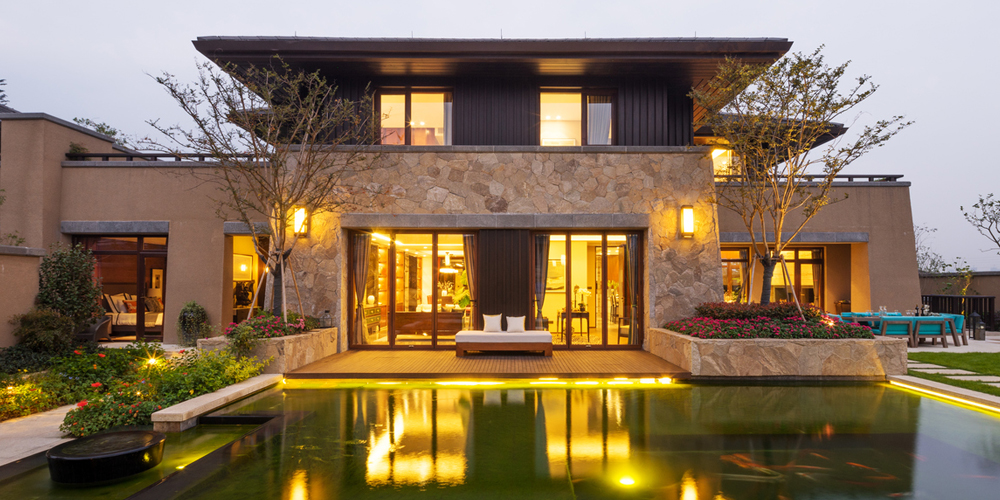
Outdoor lighting is specially designed for outdoor applications along exterior walls, ceilings, and floors. Outdoor lighting offers a variety of value to outdoor settings from functional to aesthetic, and includes many types of applications and fixture types. Each outfoor setting requires a variety of outdoor lighting systems that provides security and safety, and enhances the aesthetic value of outdoor properties. Outdoor lighting can work to illuminate dark settings, providing functional illumination along pathways, and highlight landscape features. Outdoor fixtures can include solar, hardwire, and plug-in designs.
Lighting fixtures desginated for outdoor use are constructed from a range of durable materials including marine-grade plastics and metals that will retain its functional and aesthetic value when exposed to light, heat, and moisture. Outdoor light fixtures are typically applied UV-resistant and non-corrosive coating to protect it from continual outdoor exposure to the elements. This ensures that the lighting fixture will not degrade over time when exposed to outdoor elements. A grading specification is used by manufacturers to determine the optimal conditions for outdoor lighting. These include:
UL Damp Location Rating: Appropriate for lights that are partially covered or protected
Wet Location Rating: Appropriate for use in any open-air environment
Solid Aluminum or Marine Grade Resin: Appropriate for use near ocean or beachside properties, will withstand the corrosive effext of salt, moisture, and air
Lighting fixtures for the outdoors are typically compatible with LED, incandescent, and fluorescent light bulbs. Fluorescent light bulbs are not recommended for outdoor settings. Each type of bulb has different characteristics that are suited for specific lifestyles, settings, and uses.
Advantages: Most common option for outdoor lighting, "warm" light color, inexpensive
Disadvantages: Least energy efficient, requires replacement often
Advantages: Energy efficient, can last up to 10,000 hours
Disadvantages: Expensive, light color varies
There are a variety of different methods that can be used to power outdoor light fixtures. Low voltage outdoor lighting systems (12 volts) are used most commonly because it can safely operate in wet conditions. High voltage and solar energy may also be used to power outdoor lighting systems. Each system carries different benefits and disadvantages.
Note: Consult a lighting professional before installation. This guide does not replace the expertise provided by a certified electrician.
Low voltage outdoor lighting includes 10V, 12V or 24V.
Advantages: Energy efficient, safe to use, easy installation process that allows for adjustment
Disadvantages: Compatible low voltage equipment is required for proper installation
High voltage outdoor lighting systems are defined as 120V. This power method requires more equipment such as a conduit and electrical junction box to function properly.
Advantages: Lower cost, standard voltage used to power general appliances
Disadvantages: Not energy efficient, labor-intensive installation process, expensive operating costs
Lighting systems that are solar powered harness the energy from the sun to power the fixture. This power method is typically applied in light sensors which shine only when a set level of darness is surpassed. Solar powered lighting systems are easy to operate and install because it does not require added equipment or wiring. These types fixtures typically require at 6-8 hours of sunlight in the day to operate. Solar lights are versatile, and can be convenient in outdoor settings where a power source is unavailable.
Motion sensors and timers are also energy efficient methods of lighting systems that optimize illumination use. Timers are pre-programmed to turn on and shut off at specific hours to illuminate wihtin a determined duration of time. Motion sensors turn on when it is triggered by movement. Motion sensors are best used for safety purposes to illuminate walkways or deter intruders.
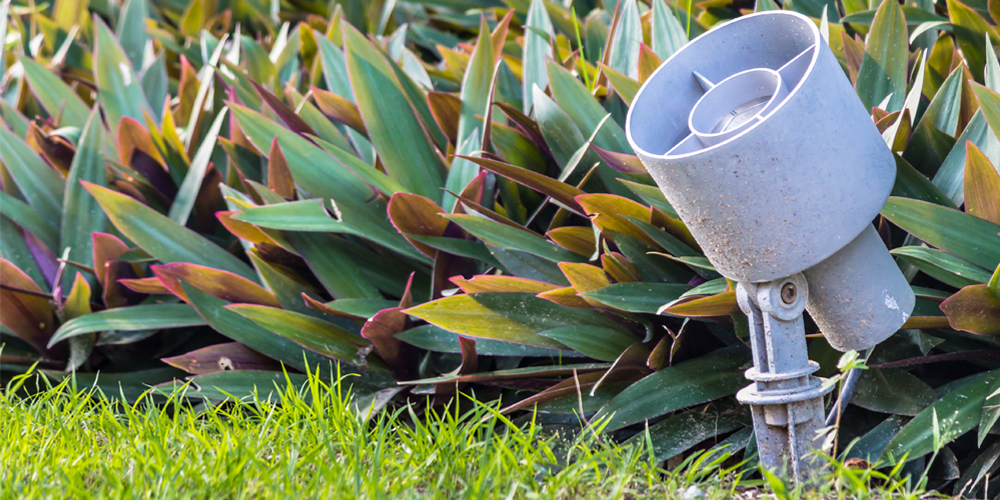
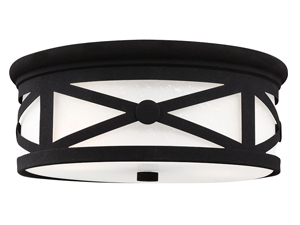
Ceiling lighting refers to overhead lighting that casts downlight illumination from above. Ceiling lights effectively illuminate spaces by providing a fixed radius of illumination below. Utilized in enclosed outdoor areas, overhead lighting is ideal in spaces where sufficient brightness is desired within a given space. Ceiling light fixtures include pendant lights and flush mounts. Outdoor pendant lights incorporates a chain or rod and suspends the fixture from a desginated height above the floor. They offer a unique, dramatic aesthetic to spaces, and are best suited in spaces with tall ceiilngs. Flush mount lightiing do not contain a chain or rod, and is instead attached directly next to the ceiling. These types of lights are well-suited in spaces with a low clearance.

Outdoor wall lighting refers to any fixture that is placed alongside a a vertical surface. These types of fixtures are attached along walls, providing a downlight or uplight cast of illumination along places such as walkways and entryways. Outdoor wall light fixtures include sconces or lanterns and bring functional and aesthetic value to any outdoor setting.
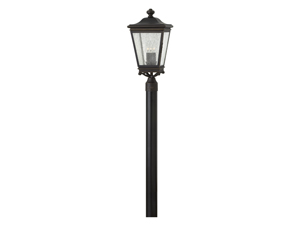
Post lights are lights that are mounted on tall posts, fences, or railings. These types of lights are primarily used along pathways, walkways, and around pools. Post lights that are installed low to the ground offer enhanced visbility that highlight landscape features and tripping hazards along walkways. Post lights installed on a taller post cast a wider area of light. Post lights can be powered through solar energy for added versatility.
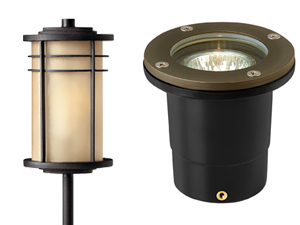
Landscape lighting works to highlight surrounding terrtain such as trees and shrubs, and outdoor decor like sculptures and fountains. This category comprises path lights, spot lights, and low-profile post lights. Landscape lighting is both functional and decorative, working to highlight hazards and enhance outdoor settings.
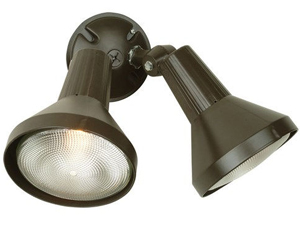
Flood lights provide a wide-beamed concentration of light directed towards a specific location. These bright lights offer ample illumination to outdoor spaces. Security and flood lights may be equipped with a motion sensor which turns on only when it is triggered by movement. Motion sensors are cost-effective and bring a heightened evel of security for potential intruders.
Security and flood lights will benefit from installation that is high above the ground. PatioLiving suggests a minimum of at least 9 ft. above ground level to cast a wider radius of illumination.
In general, 1/3 the height of the doorway is a good ratio to follow when hanging a ceiling or pendant light.
Wall lights are best positioned close to eye level around five feet and a half to six feet above ground
Consider a distance between eight and ten feet between wall light fixtures installed along the same wall>
Consider a distance bewteen two and four feet between path lighting
Always opt for larger scale outdoor fixtures, fixtures can appear 50% smaller when viewed from a distance of 50



